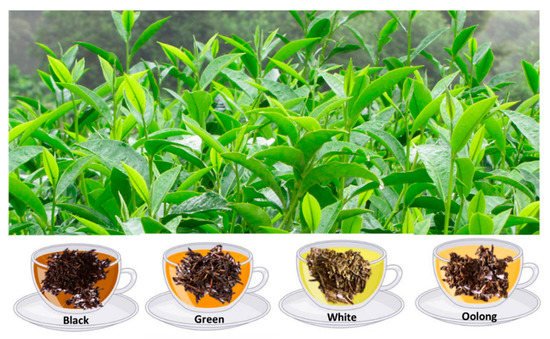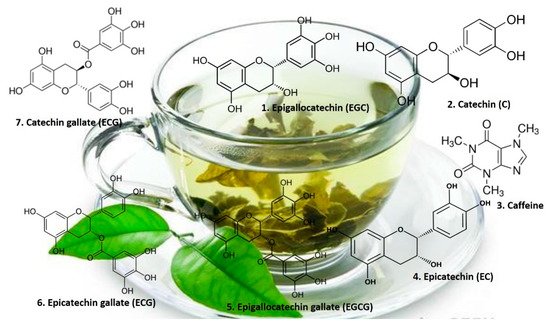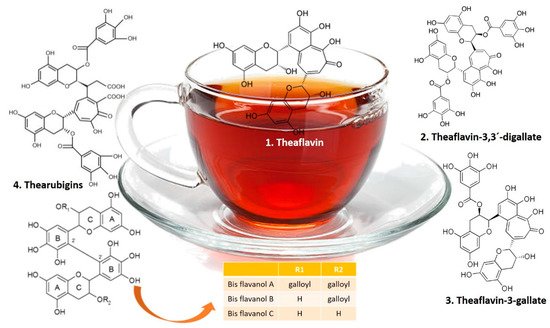You're using an outdated browser. Please upgrade to a modern browser for the best experience.
Please note this is an old version of this entry, which may differ significantly from the current revision.
Plant infusions, commonly called teas or tisanes, are the most popular form of herbal medicine worldwide, used for thousands of years. Consuming teas and herbal infusions is increasingly embedded in the routine of Americans and Europeans due to their potential health benefits, attractive flavor and taste, and relatively low retail prices.
- infusions
- tea
- tisanes
- grape sub-products valorization
1. Plant Infusions
Plant infusions, commonly called teas or tisanes, are the most popular form of herbal medicine worldwide, used for thousands of years. Consuming teas and herbal infusions is increasingly embedded in the routine of Americans and Europeans [1] due to their potential health benefits, attractive flavor and taste, and relatively low retail price [2].
However, most people do not know how to distinguish tea from infusions, tisanes, and decoctions. An infusion is produced by pouring boiling water over a certain amount of the plant of interest (roots, flowers, leaves, seeds, twigs, or others), letting it rest for a few minutes, and then straining it [3]. The resulting liquid is called an infusion. The term “decoction” designates a plant infusion obtained by a different method, using especially its fibrous parts, such as stems, roots, barks, seeds, rhizomes, and woods. The process consists of immersing a part of the plant in cold water and heating it to boiling, which is maintained for 3 to 10 min. During the cooling period, the container should remain covered [4]. An infusion prepared from two or more different plants is named a “tisane” [5]. The term “tea” should be used exclusively to designate infusions obtained from the leaves of Camellia sinensis, a member of the Theaceae family; however, this denomination is commonly used to describe an infusion prepared from any plant.
2. Tea and Other Herbal Infusions
White, green, oolong, and black teas are different types of tea made from the leaves of the same species, C. sinensis, which undergo other post-harvest treatments which modify their color and the resulting aroma, flavor, and number of polyphenols present (Figure 1).

Figure 1. The Camellia sinensis plant and the different types of tea that can be produced from its leaves. Photo adapted from Forest & Kim Starr-Jardim Botânico UTAD, 2019 [6].
White tea, made from new growth buds and young leaves, is the least processed of all teas, and, as a result, it has the most delicate flavor and aroma. The leaves are not rolled or crushed during processing but are plucked and dried in the sun and shade. This type of tea can be semi-fermented or non-fermented and releases the least amount of caffeine among all teas [7]. Sweet or flowery flavors are characteristic of this type of tea. The name “white tea” is because it is made from unfolded tea buds with white trichomes, which give a silvery appearance. It is one of the most expensive teas for the consumer [6]. White tea is consumed essentially by people concerned about their health since, because of its characteristics, it is considered to have a high therapeutic value [8].
Green tea is less fermented and contains the highest tea catechins. To produce this type of tea, the leaves are steamed or pan-roasted to inactivate their enzymes and then are dried; drying preserves their constituents [7]. The primary chemical constituents of dried green tea leaves are polyphenols (37%), carbohydrates (25%), caffeine (15%), and amino acids (6.5%) [9]. Green tea has a fresh, grassy flavor, more astringent and subtler than oolong or black tea [10].
Oolong tea is semi-fermented and a hybrid of black and green tea. With black and green tea characteristics and sweet, fruity, and flower-like odors, this type of tea is the most preferred in China. Produced initially with C. sinensis var. sinensis in Fujian Province in southeast China, it is nowadays also cultured in other regions of China with other subspecies such as C. sinensis var. assamica [11].
Black tea is a fermented tea. Fermentation is critical for developing tea aroma and flavor, which change progressively as the process is created. The scent of black tea depends on forming volatile substances consisting of essential oils and other molecules like amino acids [12]. Biochemically, the so-called “fermentation” process is, in fact, an oxidation that involves enzymatic reactions. After rupture, the tea leaves expose the cell sap (juice simply the cytoplasmatic content), whose chemical constituents and enzymes react with atmospheric oxygen [13][14]. Polyphenol oxidase and peroxidase act on catechins in the presence of oxygen and form oxidized polyphenolic compounds such as theaflavins and thearubigins [15]. The leaves’ cells are ruptured by rolling the leaves. According to Carloni and coworkers [16], this can be done by two distinct methodologies: using the “crush–tear–curl” process, which allows obtaining small particles suitable for tea bags, or using rolls, which provide large-leaf tea. Black teas are distinct for their honey and flower-like flavor [10].
Infusions can be prepared from various edible, aromatic, and medicinal plants besides C. sinensis. The beverages obtained since antiquity are delightful due to their attractive flavor, taste, and biological and physiological functions, which are beneficial for human health [17][18]. Currently, the demand and use of plants to obtain infusions with medicinal purposes are increasing, and a great variety of these herbal products are available on the market. Many are obtained from plants that are familiar to the consumers.
3. Infusions and Health
There are several reasons why more and more consumers are drinking tea and infusions. Tea and infusions started to be consumed because of their taste and aroma, and their use gradually became rooted in the culture of several countries [19]. Nowadays, they are drunk also for their health benefits due to the chemical components of the tea leaves [20][21]. Several studies have shown a close relationship between consuming foods rich in antioxidants and the incidence of certain diseases [22].
Catechins (Figure 2) are the major components of green tea leaves [23].

Figure 2. Chemical structures of catechins present in green tea.
In black tea, catechins are oxidized and dimerized during fermentation to yellow-orange “pigments” called theaflavins or polymerized to red “pigments” called thearubigins. Oolong tea contains a mixture of catechins, theaflavins, and thearubigins [23]. Therefore, polyphenols, particularly flavonoid theaflavins, theaflavic acids, and bis flavanols, are considered the main chemical black tea compounds with powerful antioxidant properties (Figure 3) [24].

Figure 3. Chemical structures of theaflavins, thearubigins, and bis flavanols in black tea.
The antioxidant activity of phenolic compounds is mainly due to their redox properties, which allow them to act as free radical scavengers that remove endogenously generated superoxide, peroxyl, and hydroxyl radicals [7]. In addition, they have a metal-chelating potential [25].
Leung and co-workers [23] demonstrated that the antioxidant potential activity of theaflavins and catechins in tea varies according to the following order: theaflavin-3,3′-gallate> (−)-epicatechin gallate ≥ (−)-epigallocatechin gallate ≥ theaflavin-3′-gallate ≥ theaflavin-3-gallate > theaflavin ≥ (−)-epicatechin > (−)-epicatechin gallate, established by using human low-density lipoprotein (LDL) cholesterol as the oxidation model. When they compared their work with a former study by Yoshino and collaborators [26] (who showed, in rat liver homogenates, that both green and black tea infusions had similar antioxidant activities), they concluded that the theaflavins present in black tea have identical antioxidant potency as the catechins present in green tea.
Being rich in natural antioxidants, tea, and herbal infusions are considered to have anti-microbial and anti-cancerous properties [7]. These beverages also offer beneficial effects against kidney stones [27] and dental caries [28], maintain bone mineral density [29], and can be used to treat malaria, high blood pressure [30], cough, stomach pain, fever [31], and diarrhea [32], besides acting as tranquilizers [33]. However, Massey [34] reports that tea consumption may increase the formation of calcium oxalate stones and advises those prone to calcium oxalate stone formation to restrict tea consumption.
4. Nutraceutical Value of Food and Beverages
Although the term Nutraceutical (from ‘Nutrition’ and ‘Pharmaceutical’) was suggested in the late 1980s by Stephen De Felice, Founder and Chairman of the Foundation for Innovation in Medicine [35], it is in Ancient Greece that the idea of the beneficial relationship between food and health first appeared, as shown by the words of Hippocrates (460–377 BC): Let food be your medicine and medicine your food [36]. Nutraceuticals are not new, and functional foods are part of a new food concept launched in Japan in the 1980s through a government program that aimed to develop healthy foods for the aging population that had a long life expectancy [37]. Since then, this concept has evolved considerably. Nutraceutical was initially defined as a food or part of a food with medical or health benefits, including disease prevention and treatment; however, nowadays, nutraceuticals lack an accurate definition, although nutraceuticals represent a growing area of biomedical research [38]. According to Santini and coworkers [39] and Daliu [35], this is due to the absence of a precise categorization of products such as food supplements, phytotherapeutics, pre-and probiotics, functional foods, and fortified foods. Despite the wide range of definitions for this term, there are two essential requirements for a particular food to be a nutraceutical: to contribute to the prevention and treatment of a specific disease (physiological benefits) and to reduce the onset of chronic diseases [40][41]. Considering the definition of nutraceuticals by Dudeja and Gupta reported above [41], products such as dietary supplements, genetically engineered “designer” foods, herbal products such as herbal infusions and tea, processed foods [41], nutritional fibers, polyunsaturated fatty acids, proteins, peptides, amino acids, minerals, antioxidant vitamins, and other antioxidants [42] are included in the designation of nutraceuticals.
The growth of the nutraceutical sector is encouraged by the interest in improving physical and mental well-being and health and in the ability to regulate bodily functions to help protect against diseases such as hypertension, diabetes, cancer, osteoporosis, and coronary diseases [43] and to compensate for an incorrect lifestyle [43][44]. Nutraceutical products are estimated to be used in 50–70% of the developed countries, and women use more nutraceuticals than men [45].
As a result of interdisciplinary research and collaboration between academic researchers and industry, new products with nutritional potential, safety, and therapeutic effects appear daily in the market. Tea and other herbal infusions are the nutraceuticals most consumed worldwide, and their health therapeutic benefits are well known. However, scientific studies still need more support to demonstrate the beneficial properties and reduced secondary effects of nutraceuticals, including tea and other herbal infusions.
This entry is adapted from the peer-reviewed paper 10.3390/beverages5030048
References
- Izzo, A.A.; Hoon-Kim, S.; Radhakrishnan, R.; Williamson, E.M. A critical approach to evaluating clinical efficacy, adverse events and drug interactions of herbal remedies. Phytother. Res. 2016, 30, 691–700.
- Taylor, S. Tea Types, Production, and Trade. In Encyclopedia of Food Science and Nutrition, 2nd ed.; Caballero, B., Finglas, P., Toldra, F., Eds.; Academic Press: Cambridge, MA, USA, 2003; pp. 5737–5743. ISBN 9780122270550.
- Jäger, S.; Beffert, M.; Hoppe, K.; Nadberezny, D.; Frank, B.; Scheffler, A. Preparation of Herbal Tea as Infusion or by Maceration at Room Temperature Using Mistletoe Tea as an Example. Sci. Pharm. 2011, 79, 145–155.
- Guimarães, R.; Barros, L.; Carvalho, A.M.; Ferreira, I.C. Infusions and Decoctions of Mixed Herbs used in Folk Medicine: Synergism in Antioxidant Potential. Phytother. Res. 2011, 25, 1209–1214.
- Malik, J.; Szakova, J.; Drabek, O.; Balik, J.; Kokoska, L. Determination of Certain Micro and Macroelements in Plant Stimulants and Their Infusions. Food Chem. 2008, 111, 520–525.
- Forest & Kim Starr-Jardim Botânico UTAD. Available online: https://jb.utad.pt/fotografia/Camellia_sinensis.2a244676b03172250ab320.pq.jpg (accessed on 5 May 2019).
- Soni, R.P.; Katoch, M.; Kumar, A.; Ladohiya, R.; Verma, P. Tea: Production, Composition, Consumption and It’s Potential as an Antioxidant and Antimicrobial Agent. Int. J. Food Ferment. Technol. 2015, 5, 95–106.
- Wang, C.; Lv, S.; Wu, Y.; Gao, X.; Li, J.; Zhang, W.; Meng, O. Oolong tea made from tea plants from different locations in Yunnan and Fujian, China showed similar aroma but different taste characteristics. SpringerPlus 2016, 5, 576.
- Sinija, V.R.; Mishra, H.N. Green tea: Health benefits, Review. J. Nutr. Environ. Med. 2008, 17, 232–242.
- Lv, H.-P.; Dai, W.-D.; Tan, J.-F.; Guo, L.; Zhu, Y.; Lin, Z. Identification of the anthocyanins from the purple leaf colored tea cultivar Zijuan (Camellia sinensis var. assamica) and characterization of their antioxidant activities. J. Funct. Foods 2015, 17, 449–458.
- Lv, S.D.; Wu, Y.S.; Li, C.; Xu, Y.; Liu, L.; Meng, Q.X. Comparative analysis of Pu-erh and Fuzhuan teas by fully automatic headspace solid-phase microextraction coupled with gas chromatography-mass spectrometry and chemometric methods. J. Agric. Food Chem. 2014, 62, 1810–1818.
- Banerjee, R.; Bandyopadhyay, R.; Tudu, B.; Bhattacharyya, N. Tea and the Use of the Electronic Nose. In Electronic Noses and Tongues in Food Science; Méndez, M.L.R., Ed.; Academic Press: Cambridge, MA, USA, 2016; Chapter 13; pp. 125–135. ISBN 9780128002438.
- Yang, C.S.; Maliakal, P.; Meng, X. Inhibition of carcinogenesis by tea. Annu. Rev. Pharmacol. Toxicol. 2002, 42, 25–54.
- Pou, K.R.J. Fermentation: The Key Step in the Processing of Black Tea. J. Biosyst. Eng. 2016, 41, 85–92.
- Samanta, T.; Cheeni, V.; Das, S.; Roy, A.B.; Ghosh, B.C.; Mitra, A. Assessing biochemical changes during the standardization of fermentation time and temperature for manufacturing quality black tea. J. Food Sci. Technol. 2015, 52, 2387–2393.
- Carloni, P.; Tiano, L.; Padella, L.; Bacchetti, T.; Customu, C.; Kay, A.; Damiani, E. Antioxidant activity of white, green and black tea obtained from the same tea cultivar. Food Res. Int. 2013, 53, 900–908.
- Middleton, E.; Kandaswami, C.; Theoharis, T.C. The effects of plant flavonoids on mammalian cells: Implications for inflammation, heart disease, and cancer. Pharmacol. Rev. 2000, 52, 673–751.
- Balasundram, N.; Sundram, K.; Samman, S. Phenolic compounds in plants and agri-industrial by-products: Antioxidant activity, occurrence, and potential uses. Food Chem. 2006, 99, 191–203.
- Lee, J.; Chambers, D.H. A lexicon for flavor descriptive analysis of green tea. J. Sens. Stud. 2007, 22, 256–272.
- Khokhar, S.; Magnusdottir, S.G.M. Total phenol, catechin, and caffeine contents of teas commonly consumed in the United Kingdom. J. Agric. Food Chem. 2002, 50, 565–570.
- Byun, J.-O.; Han, J.-S. A study perception and actual status of utilization for green tea. J. Korean Soc. Food Cult. 2004, 19, 184–192.
- Dhalla, N.S.; Temsah, R.M.; Netticadan, T. Role of oxidative stress in cardiovascular diseases. J. Hypertens. 2000, 18, 655–673.
- Leung, L.K.; Su, Y.; Chen, R.; Zhang, Z.; Huang, Y.; Chen, Z.-U. Theaflavins in Black Tea and Catechins in Green Tea Are Equally Effective Antioxidants. J. Nutr. 2001, 131, 2248–2251.
- Rice-Evans, C. Implications of the mechanisms of action of tea polyphenols as antioxidants in vitro for chemoprevention in humans. Proc. Soc. Exp. Biol. Med. 1999, 220, 262–266.
- Atoui, A.K.; Mansouri, A.; Boskou, G.; Kefalas, P. Tea, and herbal infusions: Their antioxidant activity and phenolic profile. Food Chem. 2005, 89, 27–36.
- Yoshino, K.; Hara, Y.; Sano, M.; Tomita, S. Antioxidative effects of black tea theaflavins and thearubigin on lipid peroxidation of rat liver homogenates induced by tert-butyl hydroperoxide. Biol. Pharm. Bull. 1994, 17, 146–149.
- Borghi, L.; Meschi, T.; Schianchi, T.; Briganti, A.; Guerra, A.; Allegri, F.; Novarini, A. Urine volume: Stone risk factor and preventive measure. Nephron 1999, 81 (Suppl. 1), 31–37.
- Simpson, A.; Shaw, L.; Smith, A.J. The bio-availability of Fluoride from black tea. J. Dent. Oral Biol. 2001, 29, 15–21.
- Hegarty, V.M.; May, H.M.; Khaw, K.T. Tea drinking and bone mineral density in older women. Am. J. Clin. Nutr. 2000, 71, 1003–1007.
- Pascual, M.E.; Slowing, K.; Carretero, E.; Sánchez, D.M.; Villar, A. Lippia: Traditional Uses, Chemistry, and Pharmacology: A Review. J. Ethnopharmacol. 2001, 76, 201–214.
- Kerharo, M.; Adam, A. La Pharmacopée Sénégalaise Traditionnelle—Plantes Médicinales Et Toxiques; Vigot: Paris, France, 1974; 778p, ISBN 2-7114-0646-6.
- Ouedraogo, O.G. Plantes Médicinales et Pratiques Médicales Traditionnelles du Burkina Faso: Cas du Plateau Central. Thèse de l’Université de Ouagadougou, Université de Ouagadougou, Ouagadougou, Burkina Faso, 1986; 261p.
- Abena, A.A.; Diatewa, M.; Gakossi, G.; Gbeassor, M.; Hondi-Assah, T.H.; Ouamba, J.M. Analgesic, Antipyretic and Anti-Inflammatory Effects of Essential oil of Lippia multiflora. Fitoterapia 2003, 74, 231–236.
- Massey, L.K. Dietary Influences on Urinary Oxalate and Risk of Kidney Stones. Front. Biosci. 2003, 8, s584–s594.
- Daliu, P.; Santini, A.; Novellino, E. A decade of nutraceutical patents: Where are we now in 2018? Expert Opin. Ther. Pat. 2018, 28, 875–882.
- Witkamp, R.F.; Norren, K. Let thy food be thy medicine….when possible. Eur. J. Pharmacol. 2018, 836, 102–114.
- Anjo, D.L.C. Alimentos funcionais em angiologia e cirurgia vascular. J. Vasc. Bras. 2004, 3, 145–154.
- Kalra, E.K. Nutraceutical definition and introduction. AAPS PharmSci 2003, 5, 27–28.
- Santini, A.; Cammarata, S.M.; Capone, A.; Ianaro, A.; Tenore, G.C.; Pani, L.; Novellino, E. Nutraceuticals: Opening the debate for a regulatory framework. Br. J. Clin. Pharmacol. 2018, 84, 659–672.
- Fernandes, A.M.J. Investigação Clínica Com Nutracêuticos. Mater’s Thesis, Coimbra University, Coimbra, Portugal, 2016.
- Dudeja, P.; Gupta, R.K. Tea and the Use of the Electronic Nose. In Food Safety in the 21st Century, Public Health Perspective; Gupta, R.K., Dudeja, S., Minhas, S., Eds.; Academic Press: Cambridge, MA, USA, 2017; Chapter 40; pp. 125–135. ISBN 978-0-12-801773-9.
- Andlauer, W.; Furts, P. Nutraceuticals: A piece of history, present status, and Outlook. Food Res. Int. 2002, 35, 171–176.
- Bircher, J.; Hahn, E.G. Understanding the nature of health: New perspectives for medicine and public health. Improved wellbeing at lower costs. F1000Research 2016, 5, 167.
- Durazzo, A.; D’Addezio, L.; Camilli, E.; Piccinelli, R.; Turrini, A.; Marletta, L.; Marconi, S.; Lucarini, M.; Lisciani, S.; Gabrielli, P.; et al. From Plant Compounds to Botanicals and Back: A Current Snapshot. Molecules 2018, 23, 1844.
- Télessy, I.G. Nutraceuticals. In The Role of Functional Food Security in Global Health; Singh, R.B., Watson, R., Takahashi, T., Eds.; Academic Press: Cambridge, MA, USA, 2019; Chapter 24; pp. 409–421. ISBN 978-0-12-813148-0.
This entry is offline, you can click here to edit this entry!
